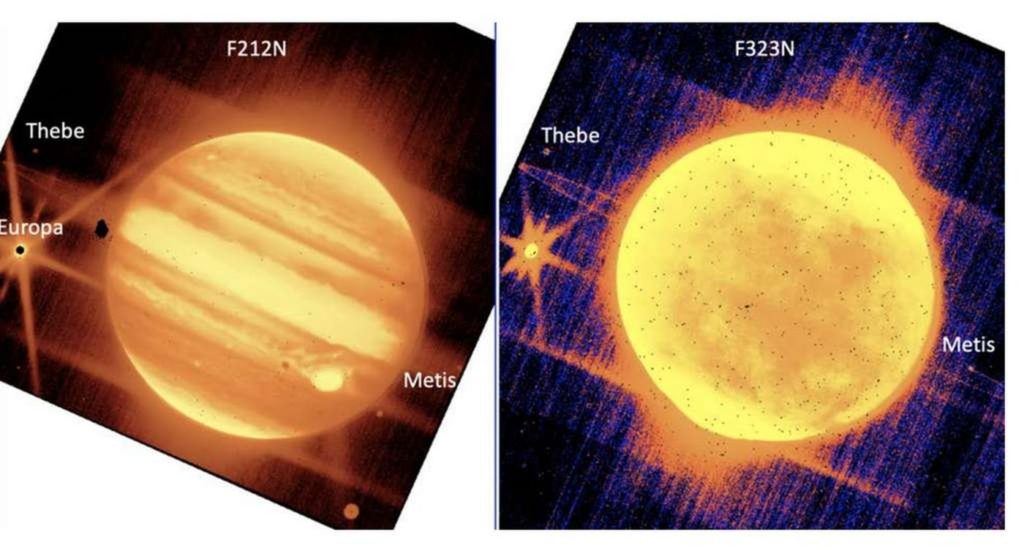James Webb brings us beautiful images of Jupiter and its moons
“Who can see the farthest can also see the closest”such could be the adage of the space telescope James Webb, which after having targeted galaxies, some of which are more than 13 billion years old, has directed its mirrors and instruments towards our own solar system and more precisely towards Jupiter. The pictures taken by the NIRCam instrument reveal, with different filters (2.12 micron and 3.23 micron filter, as well as the combination of the two, see tweet below), the planet Jupiter in all its majesty accompanied by its three moons, Europe, Métis and Thebes.
Ok, here’s a for real JWST Jupiter. The read noise (vertical lines) is…significant. But, look, the GRS has its own diffraction spikes. This is the NIRCam data with f322w2-f323n overlaid in red and f212n in sky blue. Bg is grayscale combo of both. pic.twitter.com/VWNXFBLpwE
— Judy Schmidt (@SpaceGeck) July 15, 2022
The most impressive image (below) makes it possible to very clearly distinguish the large red spot (here in white and to the right of the planet) which, as a reminder, is a monumental anticyclone whose dimensions are twice the surface of our Earth! On the left, it is of course Europa, the moon completely covered in ice and studded with geysers which will be one of the next targets of the JWST.
Finally, two images with a 2.12 micron filter on the left and a 3.23 micron filter on the right, i.e. the “decomposition” of the first image of this article, also make it possible to distinguish the very thin ring of Jupiter as well as the small moons Thebes and Metis. For information, all these shots were captured with an exposure time of barely 1 minute! Yes, James Webb is really classy…

And now ? One can only hope that this first targeting of the JWST in our solar system will lead to many more. After all, not all of the mysteries of the universe are located thousands of light-years from Earth…


